In a time where arbitrary variety, sandbox gameplay, and intricate complexity for the sake of a depth has seemingly overtaken the lexicon of popular gaming, it’s not surprising that so many developers have lost sight of the intrinsic draw of conceptual simplicity. Now that they can finally emulate the emotional and visceral feeling of our favorite films, so many developers have willingly fumbled and dropped the interactive nucleus of the gaming experience in favor of recreating cinematic ambiance. Meanwhile, copy-cat gameplay mechanics, cookie-cutter badass characters, and real-world sensibilities suck the creativity out of a medium once known and loved for its dissension in the face of the boundaries of reality.
This is not to condemn the more cinematic approach to games, but rather to lament the transition of simplistic originality to the backseat of so many developers’ minds. Luckily, games like Portal and ‘Splosion Man still pop up on occasion to remind us of the value of even one brilliant and innovative play mechanic, and how it can sustain the weight of an entire experience, without the trappings of multilayered story and forced depth.
One of the few developers that never lost sight of this simple ideal is Sega. I have always felt that the primary reason that the Dreamcast has developed such unabashed adoration from its fanbase years after its mainstream death is its dedication to originality and the precedence of fun over conceptual complexity. Games like Seaman, Chu Chu Rocket and Jet Grind Radio were unlike anything out there, and now that boundary-pushing creativity is being siphoned off to the XBLA and PSN, gamers are returning in droves to the those DC titles that thrived on the once-dominant principle of fun.
For a system that only managed to last on the shelves for a couple of years, the Dreamcast managed to pump out a huge amount of underappreciated titles. I think a lot of the blame is due to how hard it was for people to even understand the weirder “mainstream” titles (How Seaman became so synonymous with the Dreamcast that it got its own man-toad embroidered console is beyond me).
When people were grappling with these, how could they be expected to even attempt to understand the really fringe titles? Games like Maken X and E.G.G. just frightened a lot of “normal” people off. Who the hell is gonna play a game called E.G.G.?
One game that was criminally neglected was Crave Entertainment’s Super Magnetic Neo. Maybe it was because of the off-putting character design. Maybe it was because of the crippling difficulty. Maybe it was Neo’s disturbingly vacant gaze and perpetually gaping mouth. Maybe it was because Sega has only ever had one really REALLY financially successful platforming icon, whose name I need not even mention. Whatever the case, it’s an absolute shame that more people haven’t gotten to give this game a try. Like so many classic DC titles, it thrives on one simple, brilliant game mechanic, and approaches it from many, many different angles to deliver a fun, innovative experience that does just enough to separate it from the glut of generic platforms that infested early 3D consoles.
Now that I’ve touted its originality, let me say that most of Super Magnetic Neo’s gameplay is very much reminiscent of early PS1 platformers, namely Crash Bandicoot. Most levels have you running down a corridor, with no real branching paths, avoiding obstacles, jumping on platforms, etc etc. Like Bandicoot, there are even a couple animal-riding and oncoming-peril stages (it’s a boulder in Bandicoot, a wall of flames in Neo). If you get hit, you die. That’s right, unless you get the exceedingly rare invulnerability capsule (which protects you for one hit), you cannot let yourself get hit by anything. So, as you’d expect, this results in a lot of deaths, and quite a bit of Crash Bandicoot-style frustration.
The actual visual style of the game is more abstract than something like Crash Bandicoot. Really, it’s much more akin to the trippy Jumping Flash – giant, floating pyramids and coffee cups in the sky, spinning spirals of vibrant color, villains wearing bright pink suits with mouse ears with a baby in a duck thing as their leader…
Since many of the game’s stages follow a specific theme, the bizarre qualities of the artistic design are usually at least a little grounded, but once you head out into the game’s hubworld, you really get to experience the abstract insanity that is Super Magnetic Neo. To get from stage to stage, you fly through spiraling colorful tubes, witnessing some mildly nightmarish acid-induced imagery as you are pulled along on a rail by the magnet in your skull…
Oh yeah. That. The special quirk about Neo is that his head is a magnet. But you may find yourself asking,
Sorry, I couldn’t resist. The entire game of Super Magnetic Neo relies on one simple concept – opposites attract. Utilizing either a North or South magnetic field, signified by blue or red respectively, Neo can attract or repel other similarly charged objects. For example, if you charge your head with a red-hued charge, you can repel yourself off of red platforms. If you charge your head with a blue, you will stick to these platforms, head first, so that you can’t slide off and fall to your doom. Simple, right?
Well, it doesn’t stop there. Crave explores this concept from several different angles, all of which clever little additions to what would normally stand as merely mediocre platforming. Most enemies are colored with certain charges, and you can only defeat them by charging your head to either repel them (sometimes knocking them into another enemy and killing them both), or to attract and collect them up so as use them as a projectile, either to knock down walls or to kill other enemies.
Perhaps the most useful implementation of Neo’s magnetism comes from the rails hanging over Neo’s head. If you desire, you can trek the stage like your average platforming hero, avoiding obstacles and jumping on platforms. At certain points, though, magnetically charged rails present themselves. If you connect with them, they’ll quickly slide you along little spurts of the stage. If you fly from one to another, changing your charge accordingly to remain attracted to the rails, you can increase the actual progression of the level significantly. There are videos of people gliding through the early stages of the game, utilizing these rails by memory and making an extremely difficult game look like a piece of cake. And trust me, that is one hell of a task.
Don’t be fooled by the it’s cutesy look – this game is tough. The reliance on touchy scientific principles like inertia and magnetism calls for incredibly precise timing and execution from the gamer, whether it be jumping from a magnetically charged vine to swing you to the right platform, or remembering to use the right charge to attract you from one suspended mid-air track to another. The game requires you to constantly be acutely aware of your surroundings, and thus can become pretty frustrating when the changing charges manage to confuse you. Imagine walking down a corridor. You swing from a red-charged vine using your blue charge. You encounter a blue enemy directly afterward, so you use your red charge to collect it. You throw the enemy at a wall, knocking it over. Beyond that, you connect to a red track using your blue charge, fall to a blue platform, from which you jump using your blue charge, propelling yourself up to a blue track, where you use a red charge to connect to it. Confused? Well, maybe I’m stupid, but I’m really fucking confused.
This confusion wouldn’t be so frustrating if the standard platforming elements weren’t as flawed as they are. By using the right trigger, you dash forward, allowing you to make large jumps or outrun enemies. Unfortunately, that dash is so quick that it is all too easy to run right off the edge of a suspended platform. You’d think they’d at least give you the ability to hold onto the edge if you accidentally fall.
This is where Neo’s brilliant mechanic kind of bites itself in the ass. Crave is not afraid to challenge you to become so accustomed to their mechanic that you can mentally handle any series of magnetically charged tasks they throw at you. Hair-trigger gamers will likely adhere to this challenge, but many others will probably be a little intimidated. The level design can add to this intimidation, with extremely narrow platforms, fast enemies, icy floors, and ominous booby traps at every corner. The learning curve is sharp too, as the difference between the challenges of Jungle World (World 1) to the perils of Ancient World (2) to the agony of Cowboy World (3) is vast. In fact, when looking back at these critiques, I am remembering how insanely, cripplingly, mindbogglingly difficult Stage 2-4 is. I remember thinking how its appearance looked so much like something from Super Mario Galaxy. I remember being baffled at how they expected me to run and jump to a platform that was a single block. I remember flipping a timed switch for a door at the other end of the stage, with inclined icy floors, enemies, narrow platforms and moving blocks in my way. I remember bounding through my house a half-hour later, a stream of obscenities gushing from my mouth as people on the sidewalk outside listened, aghast at the tirade that was audible through my open windows.
Because of these flaws, I suspect that Super Magnetic Neo is one of those titles that could benefit greatly from a sequel. The mechanic that Crave has come up with provides an almost limitless amount of possibility in level and character design, and manages to keep an otherwise standard platformer feeling consistently fresh and new. The tone is lighthearted, and could easily be mistaken for childish, but the crushing difficulty that waits underneath its innocent veneer reveals a much more adult, challenging experience. If given the chance to improve upon the touchy physics and disappointing length of the game (it’s only 4 worlds long), I think the developers could really have another great, concept-driven platformer along the same lines as Ristar and Dynamite Headdy. Unfortunately, there’s no way in hell that this would ever happen, so I implore you to give this title a little bit of your time. The challenge is not all cheap, and every gamer should get to experience Neo’s power just once, if only to remember a time when the clever, deep, fun concept could serve as the foundation for the best games.
[Gameplay pics obtained from IGN and Gamer’s Hell]

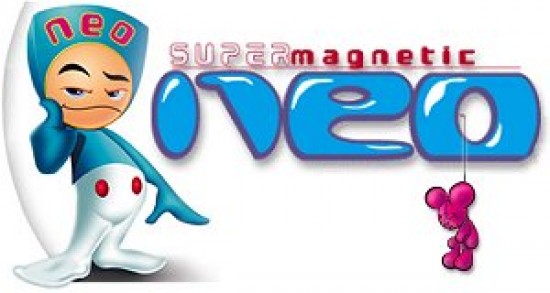
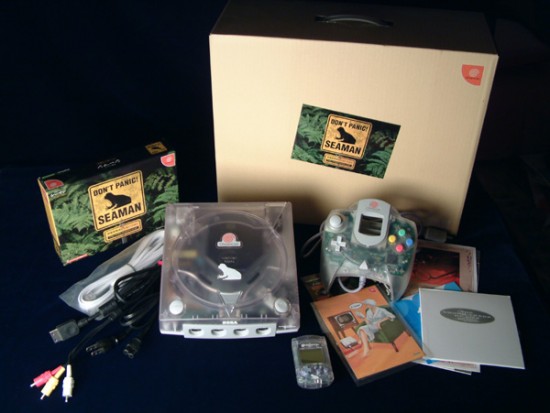
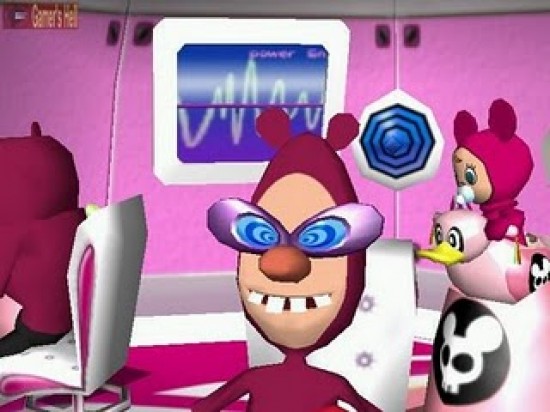
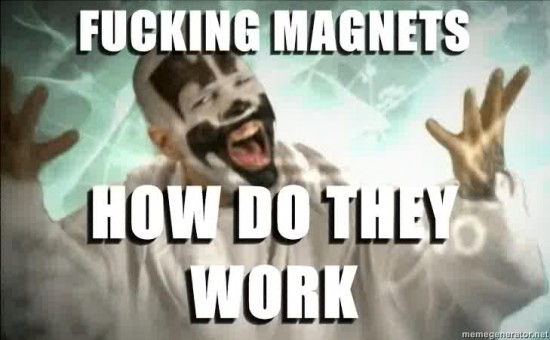
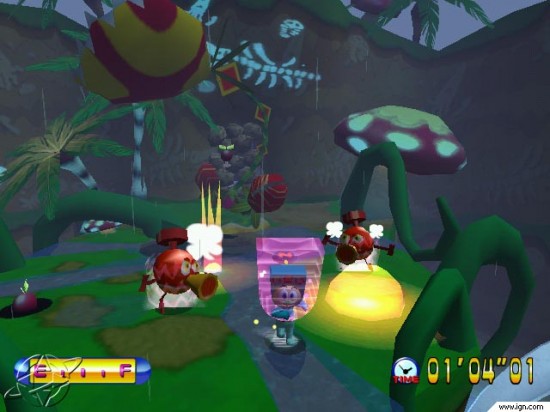
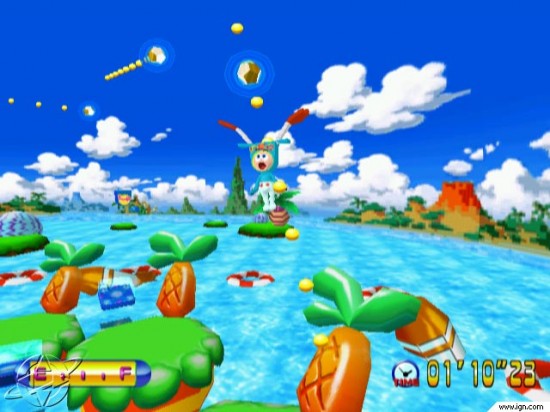
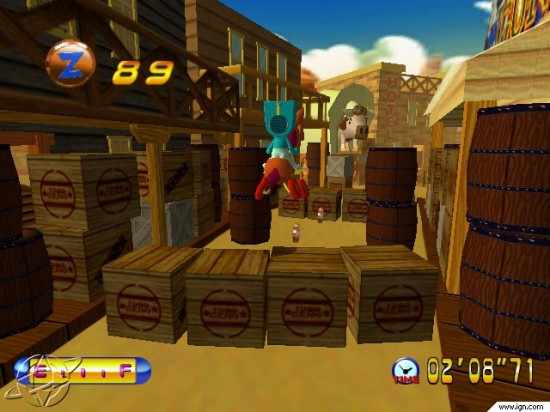

“The challenge is not all cheap…”
But I believe the game is when it comes to pricing which is good because I doubt this is going to be apart of the Dreamcast PSN/XBLA deal. It sounds like a frustrating game but one that, once you’ve beaten it, will make you feel accomplished.
I definitely feel that way, especially when it comes to level design. Most of the toughest moments felt like intentional tweaks to force you to play your best. When I got to the final moments of 2-4, the increase in frequency of obstacles made the experience almost harrowing, but I was bursting with pride when I finally beat the thing.
And yes, it is incredibly cheap on eBay. I found my copy for around 6 bucks, and I am so happy that I’ve gotten to play it.
If you do end up giving it a try, be sure to pop in on the official forum thread for Underappreciated Gems to let me know what you think. I’m very curious to see if anybody else enjoys it.
GIMME CHEATS FOR THIS GAME!!! INFINITE LIVES OR SOMETHING!!!!!!